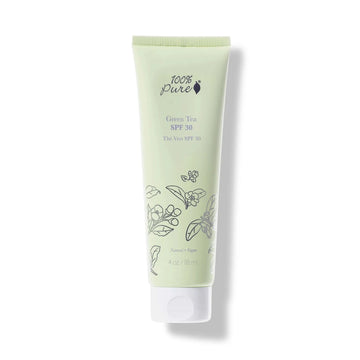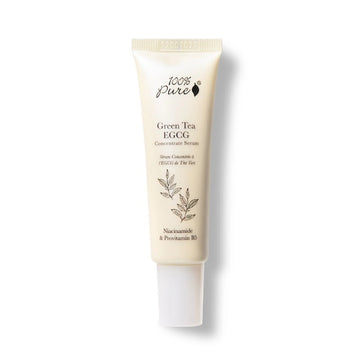Your guide to blue light exposure, and how to protect your skin
Written by: 100% PURE ®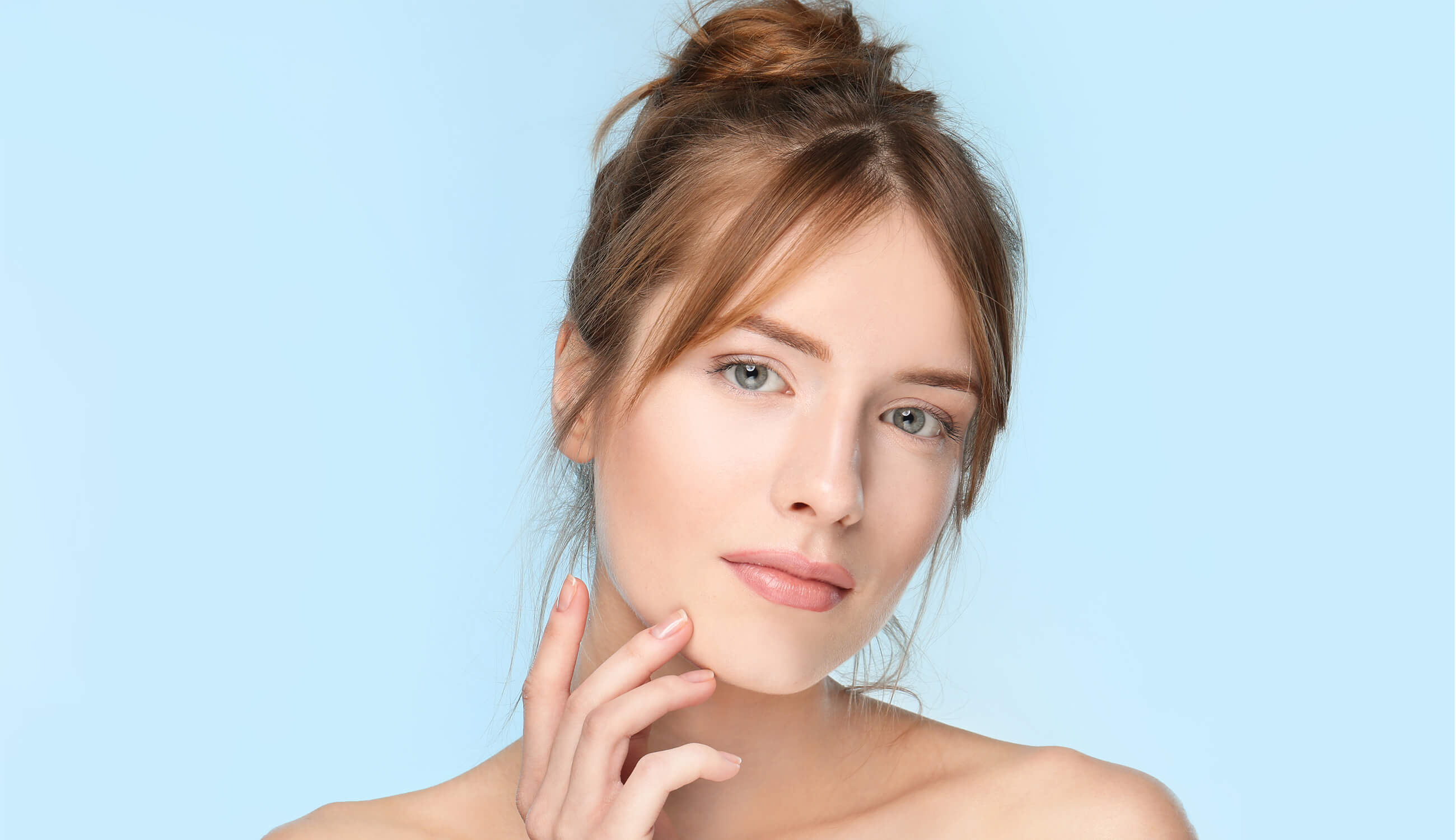
Do you know what the sun and digital devices have in common? They both emit light that damages your skin over time – with the latter being an even more pervasive skin aggressor.
Yes, we’re talking about blue light that’s being emitted from devices like our smartphones, laptops, and TVs.Did you know that this light can damage your skin on a daily basis? While much of the sights on blue light have been set on its adverse effects on eye health and sleep cycles, there’s emerging evidence on its effects for the skin. We’re talking cell shrinkage and death, both of which contribute to signs of aging.
In this post, we’ll discuss the dark side of blue light, how it impacts our skin, and blue light skin treatments that might help skin deal with the blue light blues.
As digital devices have become more integrated into daily life, so have the negative side effects of screen time. While you’ve likely come across suggestions to limit your screen time, you’re less likely to have heard the term ‘blue light’: also known as High Energy Visible Light (HEV).
To understand what blue light is, let’s look at what we’re constantly surrounded by – light. Each color of light in the visible spectrum has differing amounts of energy and wavelengths. Blue light is a high energy, short wavelength. Sunlight, which contains all colors of the visible spectrum and is called white light, is our biggest source of blue light.
It used to be that the only source of blue light was from the sun. But since the advent of technology, we have blue light that beams out of everything around us – from smartphones to laptops, to LED and fluorescent lighting.
The natural (good) form of blue light can have positive benefits, such as regulating your circadian rhythms and improving cognitive functions. However, artificial (bad) blue light from electronic devices and artificial lighting can be cause for concern.
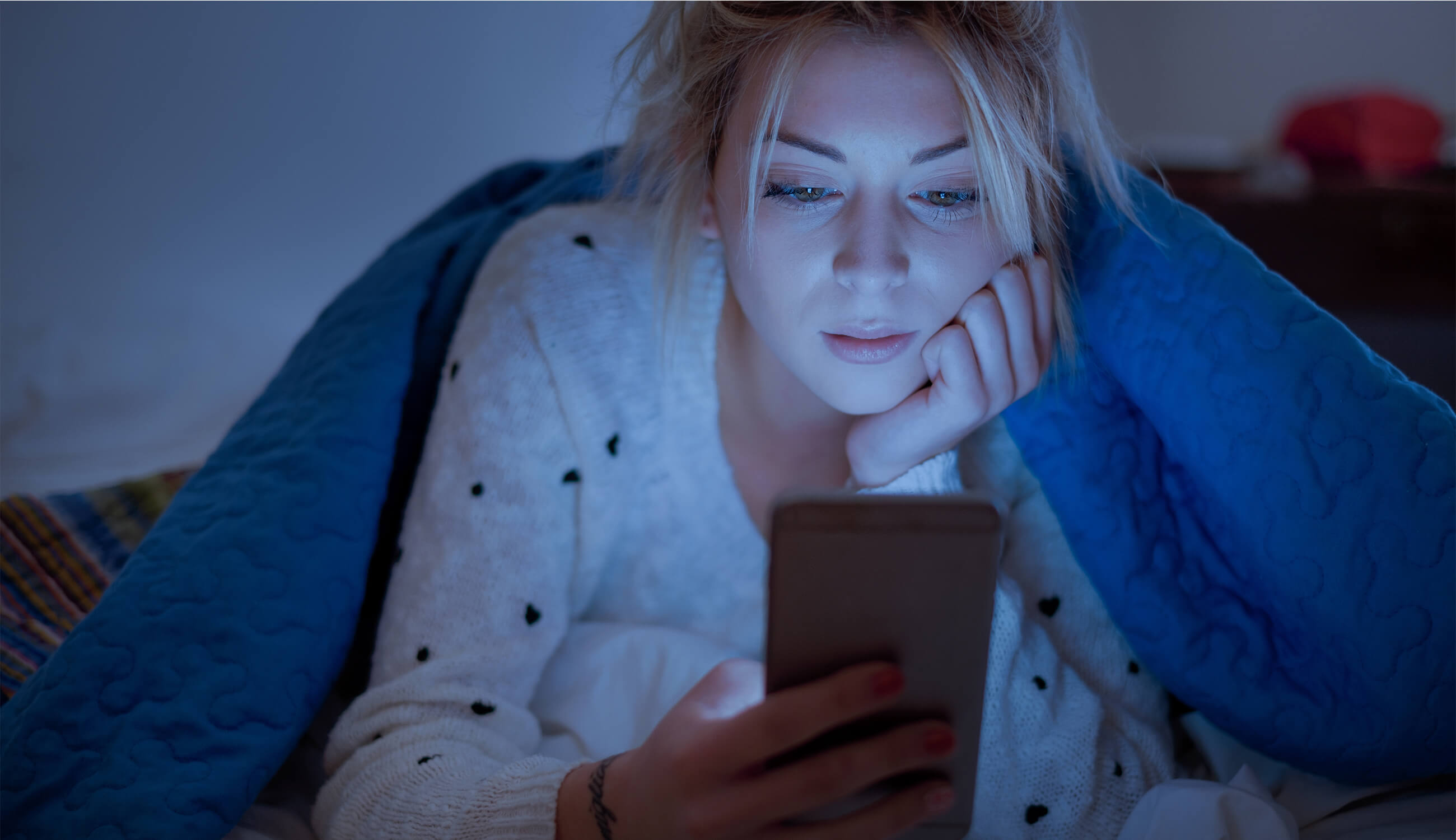
In our increasingly digital world, most of us are spending a good part of our day staring at screens. With how easily we get caught in this rabbit hole of stimulating digital outlets, it’s easy to see how it can affect our eye health and sleep cycles over time.
Since blue light has the highest energy, it can penetrate deeper into the eye. This can damage the retina – responsible for vision – and cause eye strain. In turn, eye strain can cause headaches, blurred vision, and disrupted sleep patterns.
While it’s not always possible to avoid screen time, there are tools that can help you block blue light. These include blue light filters for phones, blue light filtering apps for desktops and laptops, and blue light-blocking glasses.
Evidence suggests that blue light can, depending on exposure and intensity, impact eye health and sleep. So what might it be doing to our skin?
The more we’re in front of screens, the more our skin is exposed to blue light. The effects on skin from blue light can result in increased hyperpigmentation, dark spots, and other symptoms similar to that of UV damage from the sun.
Though blue light skin damage is still in its infancy, what dermatologists do know so far is that it doesn't look good. One study published in 2015 suggested that exposure to blue light might stimulate the production of free radicals in skin, which can accelerate the appearance of aging. If this sounds along the lines of cumulative damage caused over time from UV rays, then skin care and sun protection from blue light should follow suit.
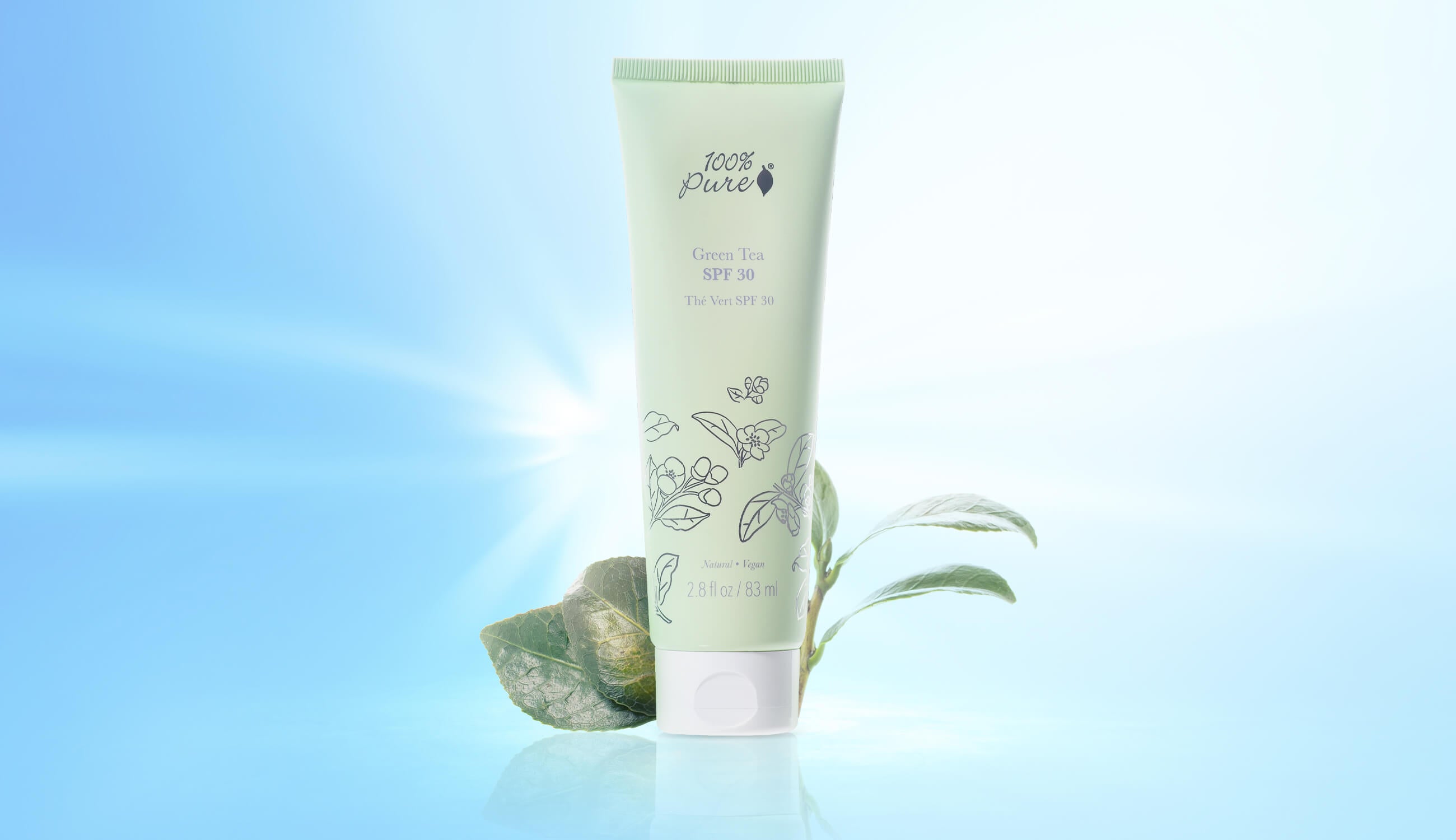
Blue light skin treatments ultimately offer similar defenses to those found in UV-blocking skin care. So they’re similar to broad spectrum sunscreens, but with just a few differences. While everyday use of sunscreen is non-negotiable, finding and applying protection against blue light doesn't require much of a skin-care shakeup.
There are some natural, plant-based ingredients that may help keep free radicals and blue light from wreaking havoc on your skin.
Here are a few ingredients that may help block blue light:
#1: Zinc
This mineral provides broad spectrum protection from burning and skin cancer, and is safe to use on even photosensitive skin. Natural sunscreens made with zinc oxide may also help you block daily damage from blue light.
#2: Rosehip
Rich in Vitamins A, C and E, plus beta carotene, rosehip is especially good at caring for skin that shows signs of photoaging. So if dark spots and uneven skin tone should arise from prolonged exposure to blue light, try adding rosehip oil to your routine.
#3: Vitamin E
Vitamin E is a potent antioxidant, meaning that it works to resist oxidative damage wrought on your skin by external stressors like sun, chemicals, and pollution. It pumps the brakes on the damaging chain of free radicals which can in turn produce more free radicals – a process that accelerates skin aging.
#4: Green Tea
Featuring a high level of polyphenols, green tea is a skin superstar at reducing the effects of free radicals on the skin. It can soothe inflammation and redness, and help prevent further cellular damage.
With the myriad of products out there geared towards sun protection, it can get tricky to find something designed specifically for blue light. We’re here to help, with a few blue light skin treatments to consider trying in addition (or in replacement of) your normal sunscreen.
100% PURE™ Green Tea SPF 30
Green tea pairs perfectly with SPF, to create a complexion game changer and treatment for sun-damaged skin. This daily sunscreen includes protective nutrients like green tea, zinc oxide, rosehip, and vitamin E. This blend can minimize free radical damage, while mitigating the appearance of sun damage.
100% PURE™ Green Tea EGCG Concentrate Serum
This lightweight, hydrating face serum feels like a water-based lotion and delivers a punch of blue-light-fighting ingredients. Green tea, acai, and goji berry are just a few of the antioxidants used to battle free radicals and signs of aging propagated by blue light.
NakedPoppy Revitalize Organic Facial Oil
Featuring the highest quality rosehip oil – known for its photoaging elimination powers – this antioxidant-rich face oil offers a lot. Skin-renewing vitamins like vitamin E, argan oil, jojoba oil, and poppy seed oil visibly firm and brighten skin. Mood-brightening bergamot releases a burst of pure delight.
Solara SunCare Time Traveler Ageless Daily Face Sunscreen
This protective mineral SPF 30 face moisturizer quickly melts into the skin with clean, multi-functional actives. It plumps the appearance of fine lines, while providing skin with a protective barrier against sun damage.
Volition Beauty Screen Time Hydrating Mist
This face mist acts as a shield between skin and damaging HEV light. It deflects negative effects with a blend of 12 plant oils, to help protect skin from photo-aging while leaving a soft, dewy finish. Soothing sunflower and marigold extract provide a potent dose of lutein, which hinders absorption of HEV rays.
Derma-E Blue Light Shield Concentrated Serum
This concentrated, mineral-rich face serum is enriched with nourishing red algae extract to help deeply hydrate skin. Antioxidant-rich lutein helps to protect and revive skin from harmful blue light exposure and environmental aggressors, to support a healthy-looking complexion.
While it’s not exactly feasible to eliminate our screen time these days, we can control how we use it. On the home and work fronts, taking breaks from screens is important. Turning them off at least an hour before bed could help with eye and sleep problems.
Having an awareness about blue light is important – but with the right skin products, the negative effects of it may also be preventable.
The sun: that fiery ball in the sky that gives such warmth yet damages our skin. Electronic devices: We all know the adverse effects the sun has on our skin, but did you know your screen time could be wreaking more havoc on your skin? taking a major toll on your skin,
We carefully hand-select products based on strict purity standards, and only recommend products we feel meet this criteria. 100% PURE™ may earn a small commission for products purchased through affiliate links.
The information in this article is for educational use, and not intended to substitute professional medical advice, diagnosis, or treatment and should not be used as such.











